My name is Stam and I am a chocoholic. I make no excuses for my sin and I am certainly not going to give it up any day now. I don’t smoke, I don’t do drugs, I don’t get drunk, but I have to draw the line somewhere!
Chocolate is my sin. I love it, I enjoy it, I eat it regularly and unlike love, sex, work, money, health, it never lets me down. A man’s and a woman’s very best friend. A mate you can rely on, a good Samaritan that will always make you feel better.
Unfortunately, the majority of us think of chocolate as the Mars’, Cadburys’, Snickers’ of this world. Bad assumption. These are not chocolates or chocolate bars in the actual sense of the word. They are creations made of sugar (mainly), poor quality cocoa beans and filled with loads of chemicals and artificial flavourings. Not only they are fattening but also bad for our health, exactly the opposite chocolate is.
So, my fellow chocoholics, this blog is about quality, pure, unadulterated chocolate!
Let’s start with the very basics first. There are 3 main varieties of cocoa trees:
1. The Forastero, is the most common and also the most robust and highest yielding tree. Unfortunately, it also produces the less aromatic beans. Almost 85% of the world production is Forastero beans due to their high yields.
2. The Criollo, is a fragile tree with very small yield, however it is considered to give the best flavoured bean. Nowadays, specialists believe that less than 1% of the world production of cocoa comes from Criollo trees.
Regardless of their variety, cocoa trees produce fruit all year round, however the main two harvest periods are in May and November. The cocoa pods grow straight out of the trunk and as soon as they are ripe enough they are cut from the tree and opened. The cocoa beans are emptied from inside the pods. The beans themselves are covered with mucilage, which is juicy, fresh and with delicate aromas.
In order to get rid of the mucilage layers of the beans are placed in wooden boxes with holes at the bottom and covered with banana tree leaves which contain bacteria that enhance the fermentation process, liquefying the mucilage so it drains away from the beans. The fermentation takes about 3-7 days and is the period where the beans develop their aromas. Unfortunately, many farmers hungry for cash from big chocolate producers do not allow this time for the beans to drain, meaning that the beans do not have any aroma.
Once the beans are drained of mucilage the next step is to dry them out so that they contain less than 6% moisture. Normally this means that the beans are spread in wide areas to dry under the sun. This part affects the flavour of the cocoa, because if the beans are not allowed sufficient time to slowly dry then the beans will not develop a full flavour.
Once dried, the beans are packed in bags and sent to the destinations where they are to be processed. To bring out the chocolate flavour the beans are then roasted and a machine removes their shell leaving them with what is known as the cocoa nibs.
 | |
| Cocoa nibs |
The nibs are then milled to create cocoa liquor, a paste that has the consistency of peanut butter.
This is then pressed to extract the cocoa butter, leaving a solid matter called cocoa presscake.
Other ingredients such as sugar, milk, vanilla and emulsifying agents such as lecithin are added and mixed, undergoing a refining process until a smooth paste is formed. The paste is then transferred to the conche, a machine which kneads and smoothes the mixture for up to 3 days at a temperature between 60C to 75C. The speed, duration and temperature of the conching affect the flavour.
After conching, the mixture is cooled down to around 40C to allow stable crystallisation of the cocoa butter. This process produces a chocolate that is shinny and smooth, with a silky texture. This process is called tempering.
After tempering the liquid chocolate is stored for later use or poured into moulds. The chocolate is now ready for use!!!
I’m sure by now you just want to taste a bar…but wait! I have some bad news for you! From the 3mil tons of cocoa beans produced each year, 85% come from Forastero beans which are the least aromatic. Considering also that 90% of these beans come from small farms which give the fermentation process very little time, almost 90% of the chocolate available to us comes from tasteless, non aromatic beans!
Furthermore, the vast majority of the brands we see in supermarkets, including Belgian chocolates such as Leonidas, Godiva and Thornton’s, do not grind their own cocoa beans. They simply buy chocolate in bulk (couverture) and transform it the way they like. More than half of the world’s bean production is transformed into chocolate by just 4 multinationals: ADM, Cargill, Barry Callebaut and Nestle. The first 3 sell to professionals only. This means that these groups do not really care about aromas or quality of beans. They simply want quantity at cost effective price.
So, the majority of the chocolate you buy is made by companies that have obtained the main ingredient (chocolate) from those 4 multinationals and have then added their own ingredients to transform it into the well known brands we all know. Unfortunately, this means that the poor quality chocolate has received an addition of sugar and artificial flavours and aromas to make it taste good.
As an example, buy your favourite chocolate and have a look at the label of ingredients. Ingredients are shown according to their percentage. So, the first ingredient has the largest percentage and so on.
I got a Wispa bar and here is what the label said:
Milk Chocolate (Milk, Sugar, Cocoa butter, cocoa mass, dried skimmed milk, vegetable fat, emulsifier E442, flavourings)
Caramel 35% (Glucose syrup, sweetended condensed skimmed milk, vegetable oil, sugar, glucose-fructose syrup, invert sugar syrup, dried skimmed milk, salt, sodium bicarbonate, flavouring).
So, from the above, I read that my chocolate bar is made up of milk chocolate and caramel. Nothing scary there. However, the mlk chocolate part has actually more sugar than cocoa, has flavourings and, most worringly, vegetable fat!! The caramel part also has flavourings, 4 types of sweeteners and vegetable oil!!! Salt??? Not really what I would expect from a pure aromatic chocolate.
Are you scared yet? Here are some other facts:
- Legislation in Europe and the US states that for a chocolate to be branded as a standard ‘Dark Chocolate’ it must contain at least 35% dry cocoa solids, or at least 43% if it is to be defined as fine dark chocolate. Milk chocolate must contain at least 25% dry cocoa solids.
- Bars such as Cadbury Dairy Milk, Galaxy or Hershey must be labelled as ‘family milk chocolate’ in the European Union as they do not contain enough chocolate to count as chocolate under these rules!
- Before 2003 EU rulings allowed manufacturers in the UK and the Netherlands to add up to 5% vegetable fats in chocolate without declaring it on the label. After 2003 this ruling has widened to include all EU countries, meaning that rather than eating chocolate we eat vegelate!!
But all is not lost. There are still companies around the world which produce and manufacture quality chocolate made from the best cocoa beans available. Most of them have won numerous awards for the quality of their chocolate and their products can be found online and in specialist shops:
Amedei (www.amedei.com):
An Italian chocolatier based in Pisa, Italy.
Bonnat (www.bonnat-chocolatier.com):
A French company founded in 1884, the first to produce a range of bars at 75% cocoa, each one made with beans from a different country. Their distribution is very limited.
Chocovic ( www.chocovic.es):
An old company from Barcelona, which focuses on professionals working with chocolate. Its cookery school has an international reputation.
Michel Cluizel (www.cluizel.com):
A French brand from Normandy, offering several different bars from specific cocoa plantations.
Domori (www.domori.com):
A young Italian company from Genoa, which co-owns a plantation in Venezuela. Their gems are the bars made with beans selected from specific areas of Venezuela.
El Rey (www.chocolateselrey.com):
Established in 1929, in 1995 became the first modern chocolate plant in Latin America.
Guittard (www.guittard.com):
A family owned San Fransisco manufacturer. In 2000 it launched a fine chocolate selection from small plantations around the world.
Marcolini (www.marcolini.be):
A Belgian chocolatier famous for its range of fine filled chocolates.
M Recchiuti (www.recchiuti.com):
A company from San Fransisco. Although it does not source its own cocoa beans, it uses only the finest raw materials.
Pralus (www.chocolats-pralus.com):
A French company from Roanne, founded in 1948, making finest quality chocolate using small batches of carefully selected cocoa beans.
Scharffen Berger (www.scharffenberger.com) :
An American company that produces excellent cocoa powder and a wide range of bars.
Valrhona (www.valrhona.com) :
A French company founded in 1924 and my personal favourite for buying chocolate to use in your cakes.

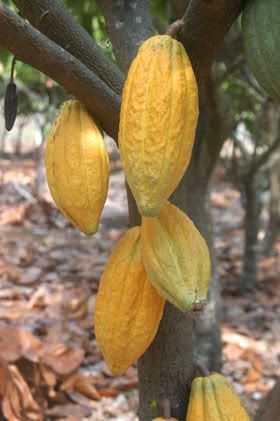
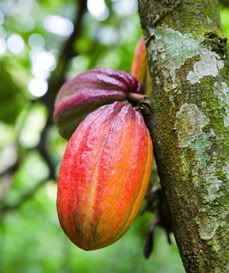







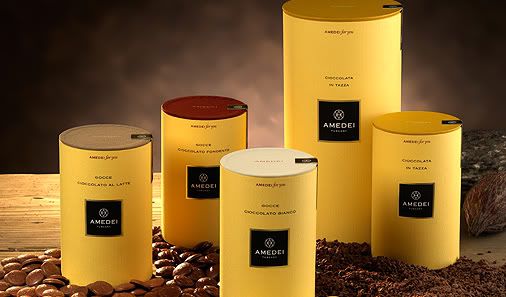

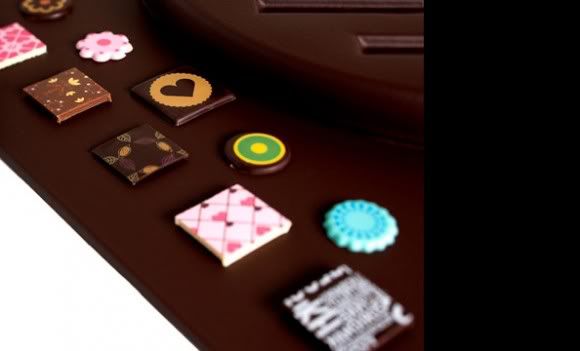


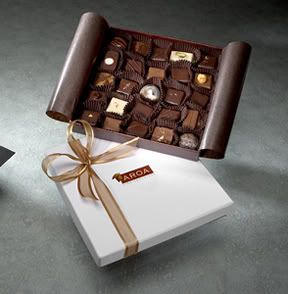


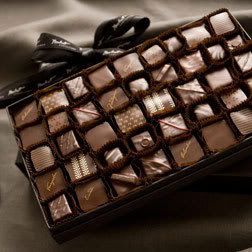
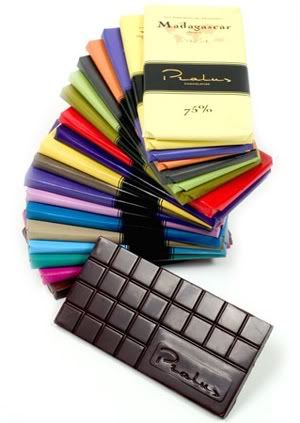
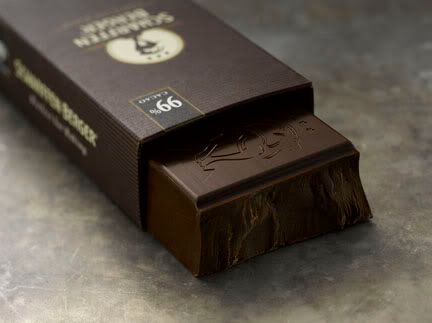

No comments:
Post a Comment